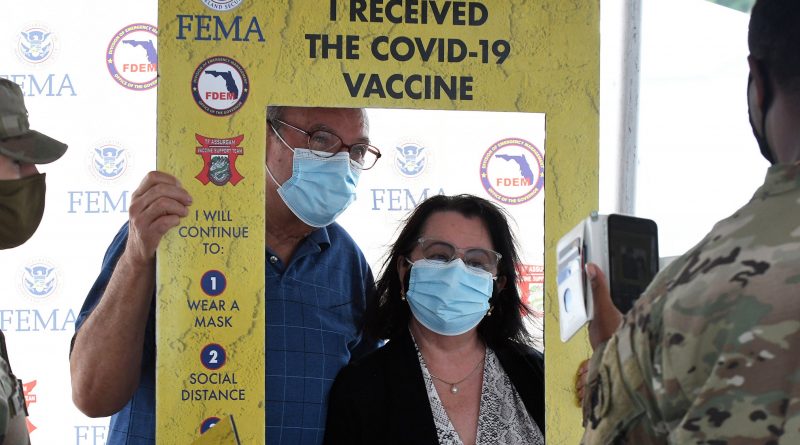CDC Released Guidelines For Masks After Vaccination
[ad_1]
CDC director Rochelle Walensky unveiled COVID-19 masking guidelines on Tuesday, allowing fully vaccinated people to unmask outdoors, and even indoors, in small gatherings.
Walensky released the new guidance, intended for people at least two weeks after their last vaccine shot — the fully vaccinated benchmark — at a White House briefing. With about 30% of Americans now fully vaccinated, the masking guidelines had been expected for some time and mark a small step on the path to the country emerging from pandemic conditions.
But the new guidelines are not simple and rely on individual judgment of risks, allowing fully vaccinated people to go without masks:
- indoors, with other fully vaccinated people, or with unvaccinated people from one other household, unless someone in that household is at high risk from COVID-19
- outdoors, exercising alone and in small gatherings with vaccinated and unvaccinated people
- dining at outdoor restaurants with people from multiple households
Masks should also still be worn when gathering with unvaccinated people from more than one household, and people should still get tested if exposed to someone infected, the CDC said. Under the guidance, fully vaccinated people should also still wear masks and stay 6 feet away from people while in crowds, at larger gatherings, or when visiting with someone at high risk from COVID-19.
Since you can’t tell who has been vaccinated or not in many situations, the CDC also recommends fully vaccinated people still wear masks at outdoor performances, when getting their hair cut, visiting malls or museums, and going to the theater, to church, or to sing with a choir.
“Today is another day we can take a step back to the normalcy of before,” Walensky said at a briefing laying out the new guidelines. “This guidance will help you, your family, and your neighbors make decisions based on the latest science and allow you to safely get back to things you love to do.”
Only 10% of documented COVID-19 infections occur outdoors, said Walensky, and the risks of infection are roughly 20 times higher indoors. More updates to mask guidelines are anticipated as more people are vaccinated, she added.
The majority of US vaccinations are Pfizer-BioNTech or Moderna, which appear to be 90% effective under real-world conditions in reducing the chances of infection. While there is encouraging evidence that fully vaccinated people largely do not catch even asymptomatic cases of COVID-19, there are very rare reported instances of a fully vaccinated person nevertheless catching the virus, leaving scientific understanding of the odds of transmission from a vaccinated person to unvaccinated ones, or vice versa, unclear.
“This is complicated, but complexity is the price for allowing people to go without masks early,” said epidemiologist George Rutherford of the University of California, San Francisco. People might, for example, disagree about what constitutes a small gathering, and knowing who is and isn’t fully vaccinated is complicated in many settings. “If you want simple rules, then we just wear masks until every last one of us is vaccinated.”
“The bottom line is we are only going to get to us all not having masks when we have herd immunity, when most of us get fully vaccinated,” Rutherford said.
In the coming weeks, the CDC will release updated guidelines for coronavirus testing, visits to nursing homes, and restaurants.
